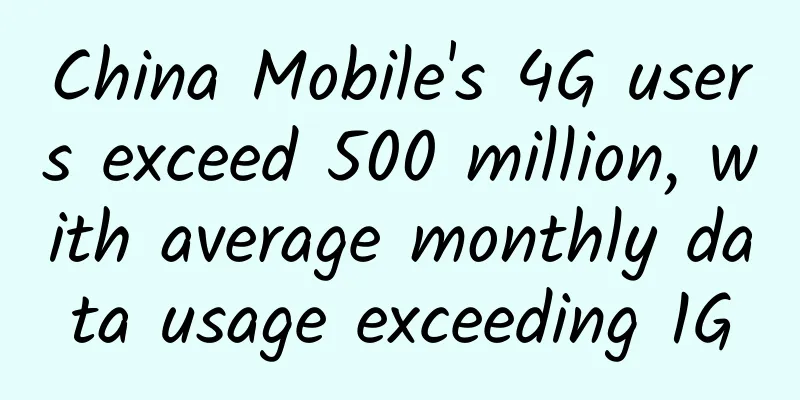The three major operators’ annual data for 2021 were released. How is their performance?

|
In a blink of an eye, the Spring Festival holiday is over. Many people have returned to work, and the three major operators have also ushered in the first month of operating data reports after resuming work in 2021. Compared with the results of the last month of 2020, the operating data of the three major operators have improved significantly, which can be said to be a good start. In terms of mobile users, the three operators have stopped the downward trend and are all showing signs of recovery. In terms of 4G users, China Mobile and China Unicom, which released the data, performed quite well, more than doubling the data in December. In terms of broadband users, as expected, China Mobile has always been in the lead, China Telecom has performed fairly well, and China Unicom has seen a long-awaited positive growth. A very subversive scene is that in the 5G business, China Telecom's net increase in 5G users exceeded 10 million for the first time, and with 10.67 million, it crushed China Mobile for the first time, almost three times the net increase of China Mobile. It is expected that the total number of its 5G users will exceed 100 million next month, making it the second operator in China and even the world to exceed 100 million. The Spring Festival season ends: Operators achieve outstanding results In recent years, the "Spring Festival" has become a market that operators must compete for. The workload of operators in the first quarter basically depends on this month. In 2020, due to the epidemic, the data of the three major operators were very bleak, but this year, with the joint efforts of the whole society, the epidemic in my country has not recurred, which has given operators a chance to breathe and achieved good results this month. Data shows that China Mobile's mobile customer base decreased by 1.057 million in January 2021, with a total of 940.861 million users. In the same month, China Mobile's 4G customer base increased by 4.32 million, totaling 779.626 million. The number of 5G package customers increased by 3.968 million, totaling 168.971 million. In terms of wired broadband, the number of customers increased by 3.366 million, totaling 213.687 million. According to data released by China Telecom, in January, China Telecom's mobile user base increased by 1.53 million, and the total number of mobile users reached 352.55 million. In the same month, the net increase in 5G package users was 10.67 million, and the total number of 5G package users reached 97.17 million. In terms of wired broadband business, China Telecom's wired broadband user base increased by 1.34 million in the same month, and the total number of wired broadband users reached 159.87 million. Late yesterday, China Unicom released its operating data for January. This time, China Unicom did not release the long-awaited number of 5G users. In terms of mobile business, China Unicom's mobile billing users increased by 545,000 in January, reaching a total of 306.35 million. In terms of 4G users, the net increase in January was 2.739 million, reaching a total of 272.92 million; the net increase in fixed-line broadband users this month was 812,000, reaching a total of 86.907 million users. Traditional business solidification 5G users are the only variable Looking at the operating data of the operators in the past two years, it is not difficult to find that in terms of traditional businesses: mobile users, 4G users, and broadband users, the data of the three companies rarely changed. Basically, China Mobile is the leader, China Telecom is the follower, and China Unicom is at the bottom. Now, the focus of competition among the three companies has shifted to 5G users, which is also the most valuable battlefield for the three companies. Among the three major operators, only China Mobile and China Telecom have chosen to disclose 5G user data, while China Unicom's data has always been a mystery, sparking speculation from the outside world. In fact, China Unicom is also working hard to compete with the other two. In January, an unexpected event occurred. China Mobile, which had always seen rapid growth in 5G net additions, suddenly experienced a decline. This was the first time that China Mobile's data was lower than that of China Telecom since the two companies released their data. China Telecom, which has always been low-key, also proved its true strength to the outside world this time. In terms of attracting new users, operators have their own tricks. Since the commercialization of 5G, the competitiveness and maturity of mobile phones have been continuously improved, which effectively supports the development of 5G. In the 3G and 4G eras, China Mobile and China Telecom both launched customized mobile phones, but they basically ended in failure. With the advancement of 5G, the growth space of 5G terminals has been further released, and operators still want to grab users through customized mobile phones. China Mobile launched its self-developed and self-branded Pioneer X1 as early as August 2019. At that time, the "Pioneer X1" equipped with a Snapdragon 855 processor, under-screen fingerprint unlocking, and rear triple cameras was priced at 4,988 yuan, and its sales were like "a drop in the ocean". On November 7, 2020, at the 2020 Tianyi Smart Ecosystem Expo, China Telecom announced the launch of the Tianyi No. 1 cloud phone, priced at 999 yuan. According to official introduction, China Telecom Tianyi No. 1 cloud phone relies on the powerful 5G network to store massive data and complex calculations in the cloud, while the phone itself is only used as a carrier to display information. Not only that, in the "cloud phone" mode, consumers can play cloud games, cloud videos, cloud applications and other functions, and experience massive applications without downloading. On January 25 this year, China Unicom Huasheng officially launched China Unicom's new 5G mobile phone brand - U-MAGIC, and simultaneously released two 5G mobile phones under the brand, U-MAGIC 20 Plus and U-MAGIC 20. In terms of price, U-MAGIC 20 starts at 1,699 yuan, and U-MAGIC 20 Plus starts at 2,299 yuan. In the 5G era, it is difficult to say whether operators’ customization opportunities will repeat the same mistakes or change course, but it is foreseeable that with the construction of 600,000 (or more) 5G base stations in the next year, more users will choose to use 5G networks. |
<<: Starlink Internet service aims to increase speed to 300Mbps this year
>>: City managers can now predict the future using 5G and digital twins
Recommend
Former NASA chief joins satellite internet company Viasat
According to foreign media, former NASA administr...
Online interview experience: Is it absolutely safe to use HTTPS?
[[421374]] This article is reprinted from the WeC...
What is cloud network?
The future of cloud is bright. By 2024, more than...
ColoCrossing 25% off: $2.96/month - 1GB/25G SSD/20TB@1Gbps/Los Angeles & New York data centers
Last month, the blog shared information about Col...
5G commercialization two years review: Operators spent 175.7 billion yuan last year and have built the world's largest 5G mobile network
"As of the end of February 2021, a total of ...
Comprehensive diagram! Global operators' 5G deployment plan timeline
GSA's latest report shows that 154 mobile ope...
It’s time to stop saying “5G is useless”! 5G is the world’s “new oil” and will give rise to nine major industry trends!
[[336158]] This article is reprinted from the WeC...
What is 6G network? Do you know?
6G networks are defined as cellular networks that...
What do you think the sequence number of a TCP reset message is?
This article is reprinted from the WeChat public ...
Sharktech: High-security VPS price reduction + 50% off annual payment from $29.7/year, 10Gbps unlimited traffic server $399/month 2*Gold 6148/128G/2T NVMe/Los Angeles and other computer rooms
In the first month of 2024, Sharktech sent a new ...
The three major operators' Q1 2021 financial reports: revenue and profits both increased, and 5G drove performance back to prosperity
“Plant trees in spring and harvest fruits in autu...
Akamai Report: Financial Services in Asia Pacific and Japan Suffered Over 3.7 Billion Attacks, Remains the Most Attacked Industry
October 11, 2023 – Akamai Technologies, Inc. (NAS...
Knowledge Popularization | 7 Deployment Solutions for 5G Private Networks
[[315546]] What is 5G private network? 5G private...
The Ministry of Industry and Information Technology released the "14th Five-Year Plan", and the information and communication industry's revenue will grow by 10% annually by 2025
On November 16, the Ministry of Industry and Info...
Qualcomm, Ericsson and OPPO achieve Europe's first commercial 5G SA network
According to foreign media reports, OPPO, Ericsso...









